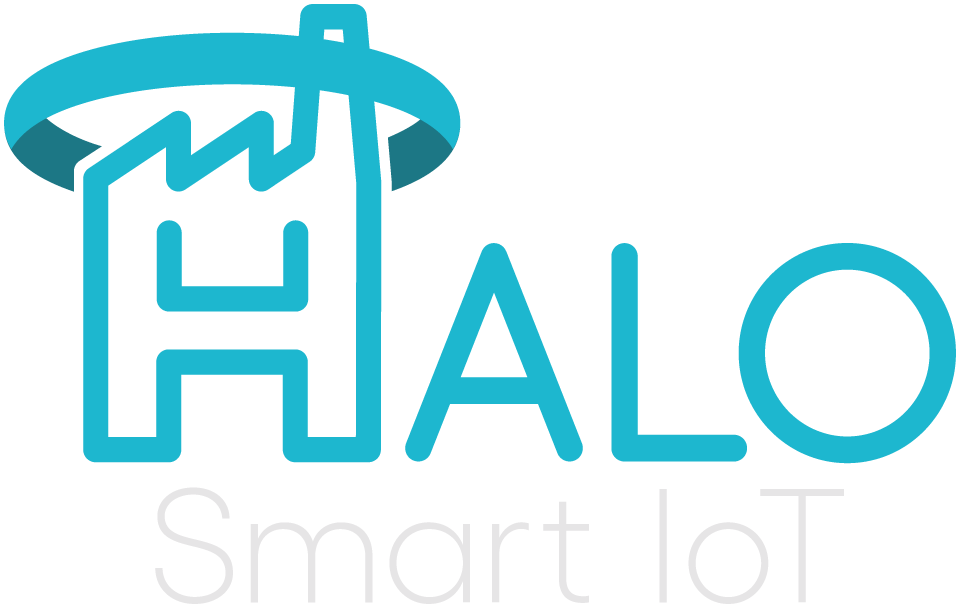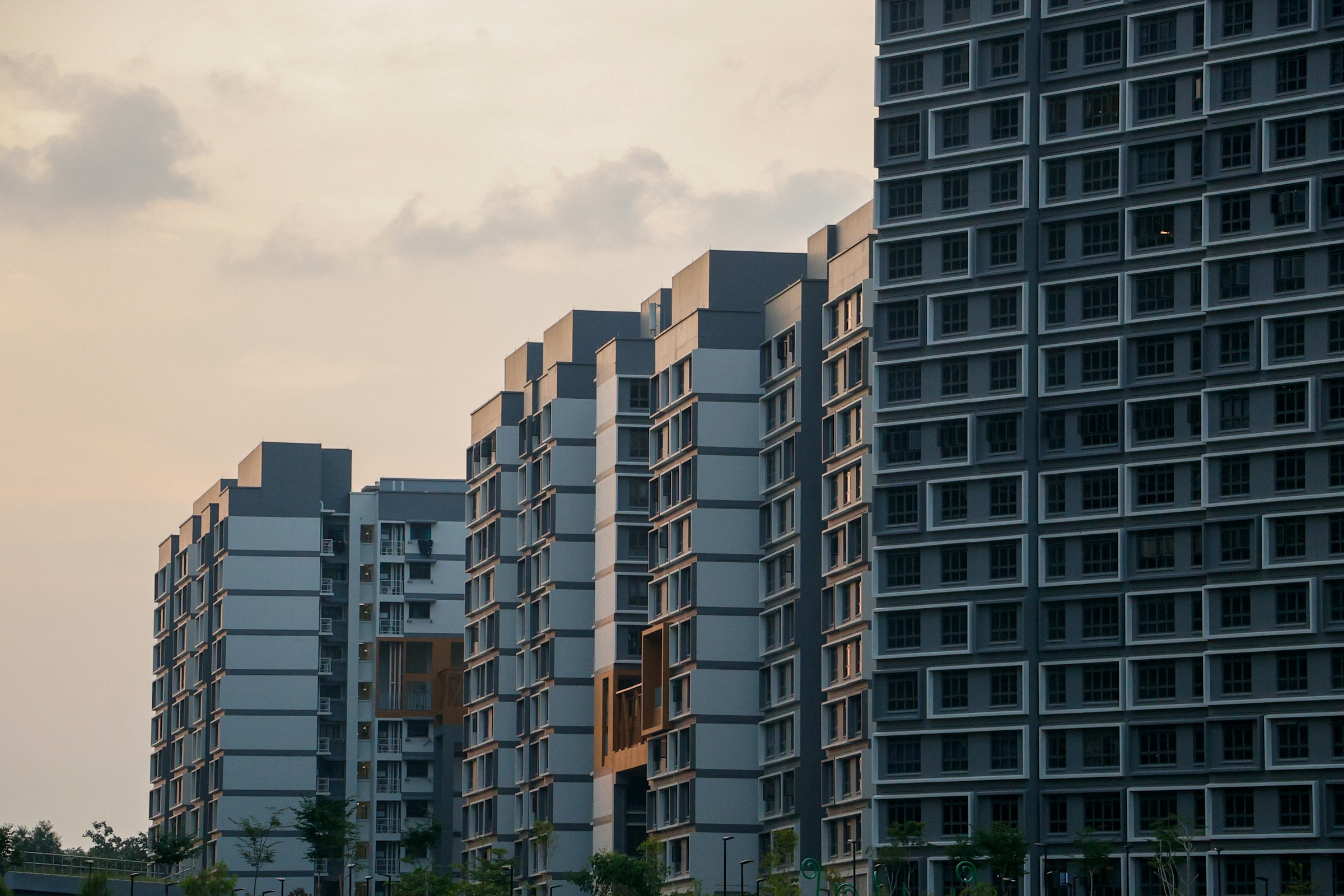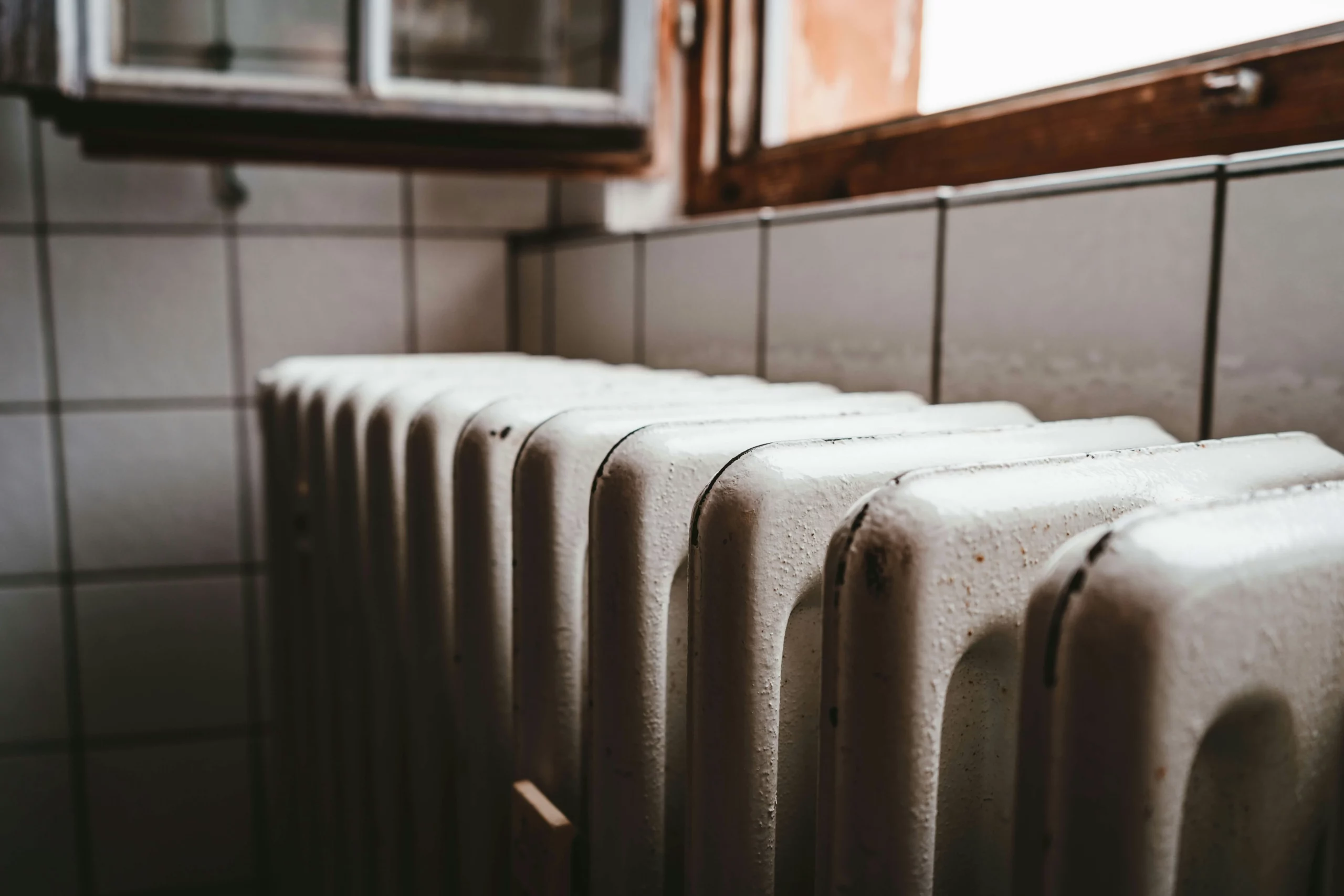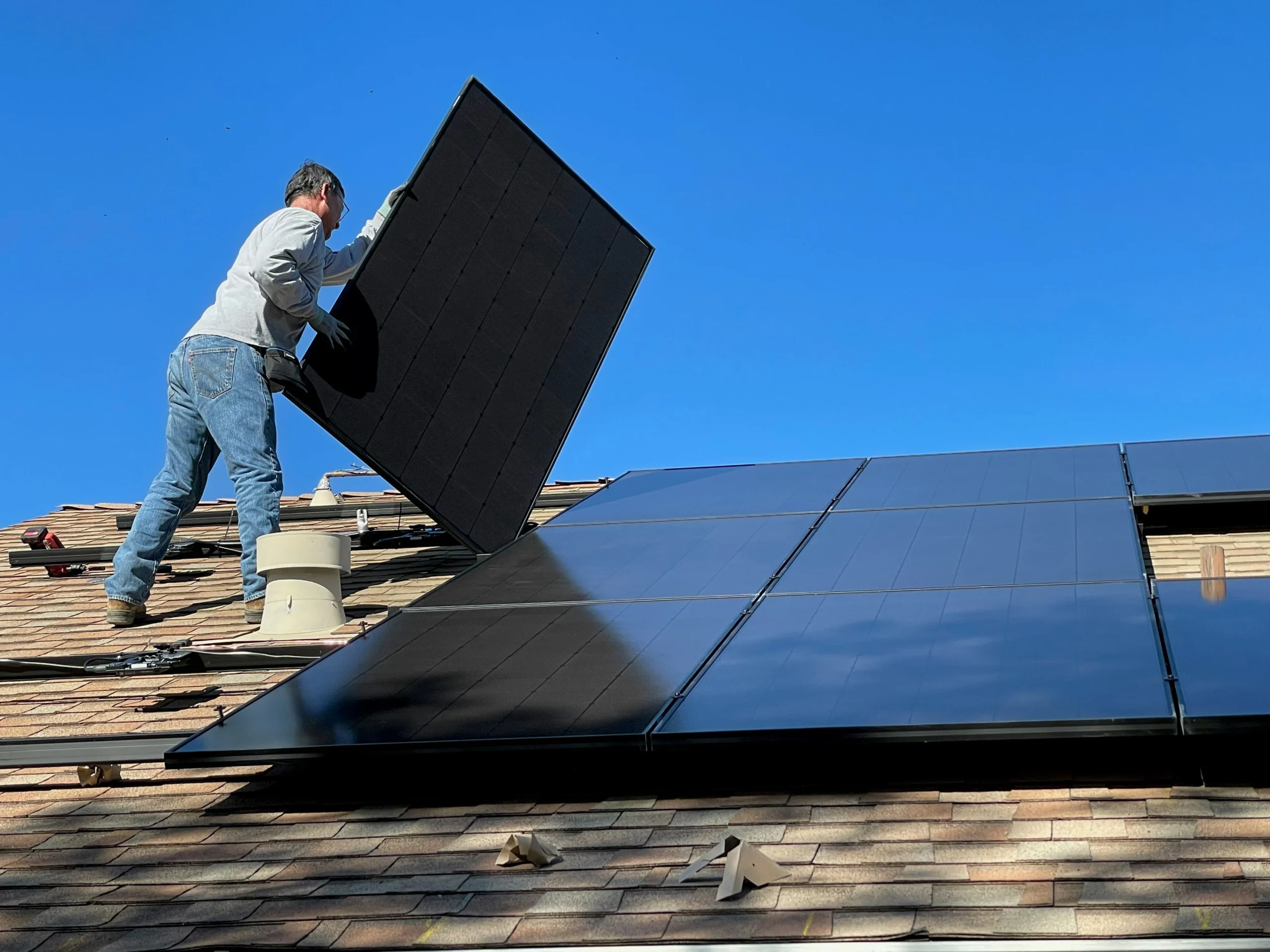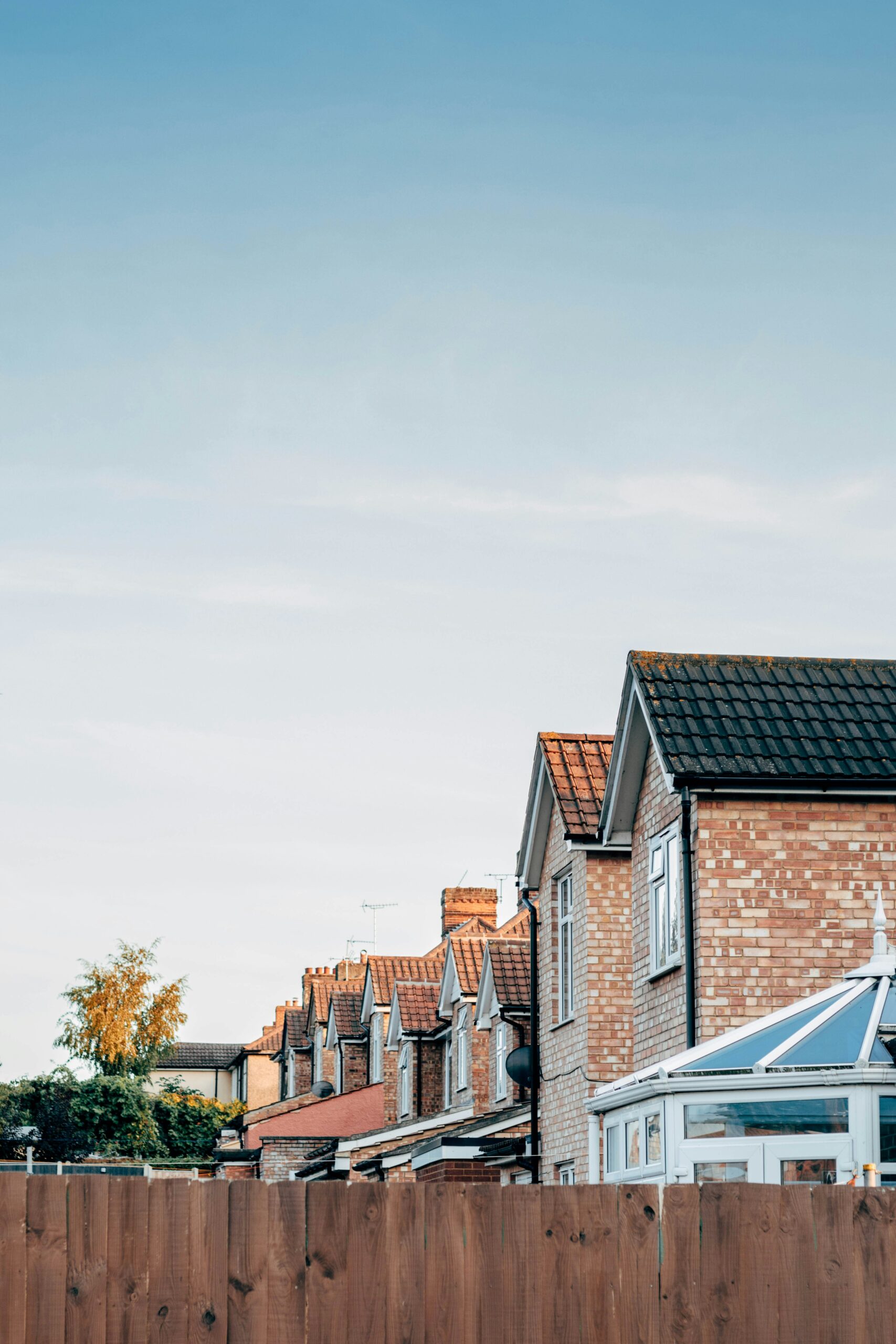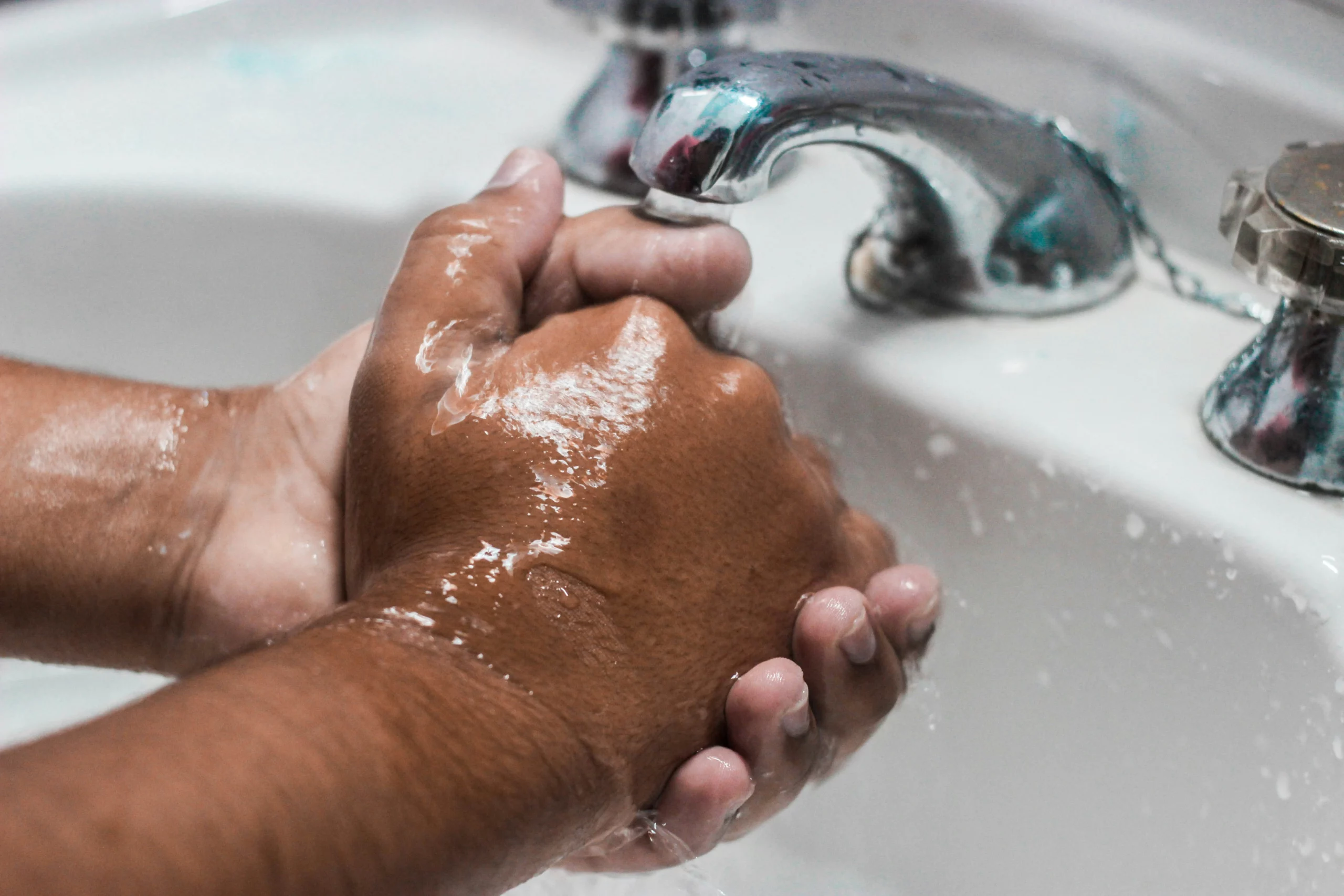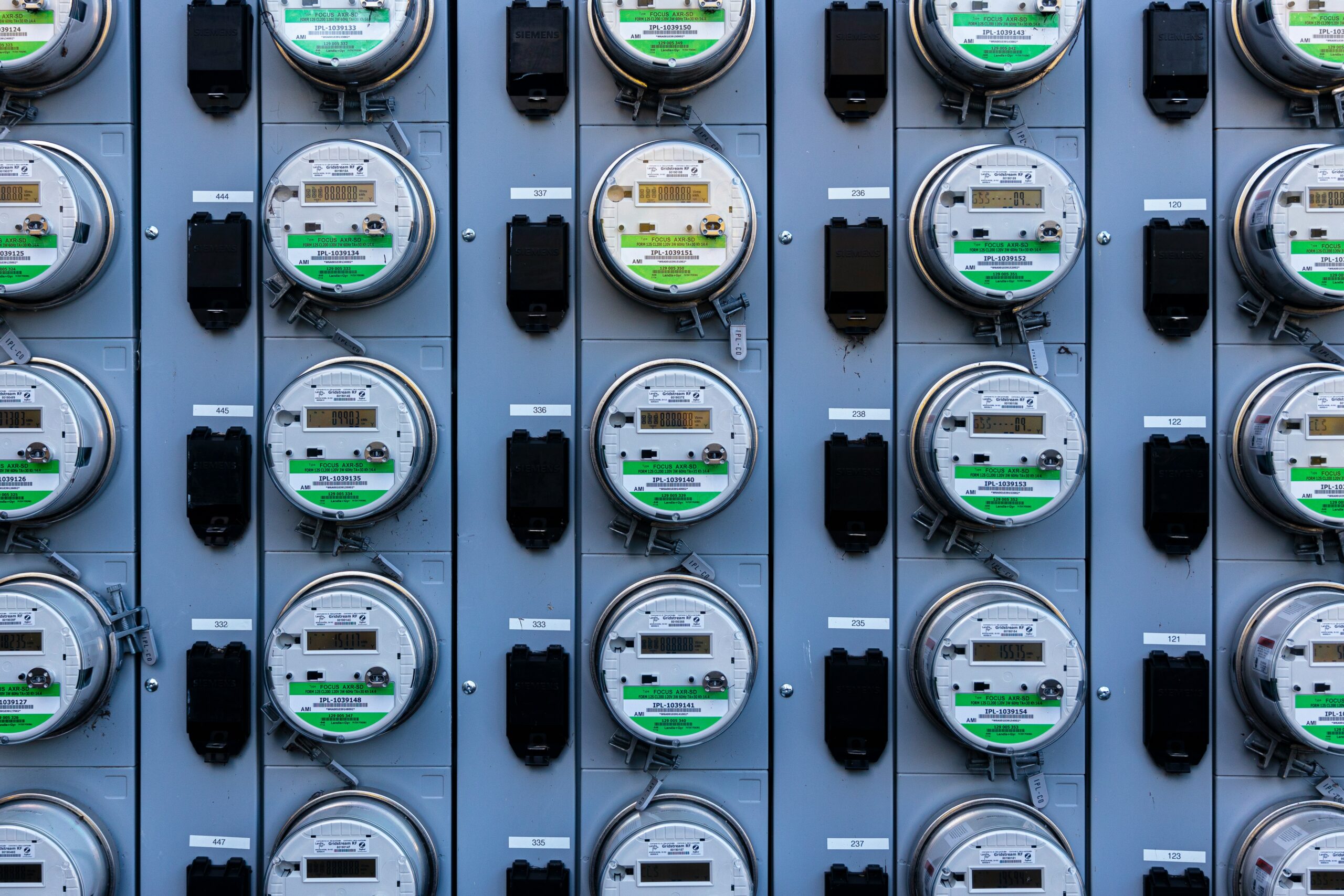The Internet of Things (IoT) is revolutionising the property management of large residential real estate portfolios, offering innovative solutions that streamline operations and significantly reduce maintenance costs. By integrating IoT monitoring solutions across multiple properties, property managers can enhance efficiency, improve tenant satisfaction, and ensure better resource allocation. Here’s how IoT is transforming large residential portfolio management. 1. Real-Time Monitoring and Data Collection IoT devices facilitate real-time monitoring and IoT Analytics of various aspects of residential properties, including: The continuous flow of data empowers managers to make informed decisions and quickly respond to any issues that may arise in any property within the portfolio. 2. Predictive Maintenance Across Multiple Properties One of the most significant advantages of IoT in large residential portfolio management is the ability to implement predictive maintenance strategies: 3. Streamlined Operations IoT solutions can streamline various operational tasks within large residential portfolios: 4. Enhanced Tenant Experience Across the Portfolio The integration of IoT technology significantly enhances the tenant experience, fostering greater satisfaction and retention: 5. Cost Reduction for Portfolio Management IoT monitoring solutions lead to significant cost savings for property management in large portfolios: 6. Data-Driven Insights for Portfolio Optimisation IoT generates a wealth of data that can be analysed for deeper insights into portfolio management: The integration of IoT monitoring solutions is transforming the management of large residential real estate portfolios by streamlining operations, enhancing tenant experiences, and reducing maintenance costs. As the technology continues to evolve, property managers who embrace IoT will be better equipped to meet the demands of modern living and maintain competitive advantages in the real estate market. Ultimately, IoT not only improves operational efficiency but also fosters a more responsive and engaging environment for tenants, driving long-term success in large residential portfolio management.
Understanding Fuel Poverty: Causes and Consequences
As the UK approaches the colder months, a significant change in energy costs is on the horizon. The energy regulator, Ofgem, has announced a rise in the energy price cap, which will increase a typical household’s annual energy bill by £149 starting in October 2024. This 10% hike will bring the average yearly cost to £1,717, marking a notable shift from recent trends of falling energy prices. Read The Rising Energy Cap in the UK: What It Means for Households & Pensioners for more information about the new energy cap While this increase remains lower than the peak of last winter, it presents a challenge for many households, particularly pensioners and those on fixed incomes. The government’s withdrawal of certain financial supports and halting of winter fuel payments for 10 million pensioners in England and Wales means these rising costs will be felt even more acutely. As a result, the issue of fuel poverty is expected to worsen, making it vital to explore its causes and consequences. This article delves into the factors behind fuel poverty and its impact on households across the UK. Causes of Fuel Poverty Fuel poverty arises when a household cannot afford to heat their home to a comfortable and healthy temperature. Several key factors contribute to this, including: 1. Household Income A primary cause of fuel poverty is low household income. When a significant portion of a family’s income is spent on energy costs, there is less left for other necessities such as food, clothing, and healthcare. As of 2023, an estimated 5.6 million households in the UK are experiencing fuel poverty, a figure that has risen from 4.5 million in 2021. Families on lower incomes are disproportionately affected by rising energy costs, leaving them vulnerable to cold, damp living conditions. 2. Energy Efficiency The energy efficiency of a home plays a significant role in determining whether a household will face fuel poverty. Homes that are poorly insulated or have inefficient heating systems require more energy to maintain a comfortable temperature, driving up costs. Rural homes, in particular, are often less energy-efficient, with lower average energy ratings (FPEER) and larger floor areas. This results in higher fuel costs, with rural households reporting an average fuel poverty gap of £778, significantly higher than the national average of £417. 3. Rising Energy Prices The UK’s energy price cap, set by Ofgem, limits the amount suppliers can charge households on a default tariff. However, recent increases have raised the average annual energy bill to £1,717, up from £1,568. Despite this cap, wholesale energy prices continue to drive up household bills, further exacerbating the issue for those already on the brink of fuel poverty. “The lack of control over basic living conditions is particularly challenging for vulnerable groups such as the elderly, disabled, or those with chronic illnesses.” Impact on Households The consequences of fuel poverty are far-reaching, affecting not just household finances but also health, well-being, and social inclusion. 1. Health Problems Living in a cold, damp home can have severe health implications. Prolonged exposure to cold temperatures can exacerbate respiratory conditions such as asthma, while dampness increases the risk of mould, which can further impact lung health. Additionally, cold homes are associated with increased risks of cardiovascular problems, such as strokes and heart attacks. Households in fuel poverty often have to self-ration their energy use, which can mean going without heat for extended periods, heightening these risks. 2. Mental Health Strain The stress and anxiety caused by financial insecurity can lead to mental health issues. Households in fuel poverty often face difficult choices about whether to heat their homes or pay for food, rent, or other essentials. This strain, combined with the discomfort of living in cold conditions, can lead to increased levels of depression and anxiety. The lack of control over basic living conditions is particularly challenging for vulnerable groups such as the elderly, disabled, or those with chronic illnesses. 3. Social Exclusion Fuel poverty can also contribute to social isolation. Individuals and families living in cold homes are less likely to invite friends and family over, leading to feelings of exclusion and loneliness. Some people resort to spending long periods in public places such as libraries or community centres to keep warm, but this does not address the core issue of inadequate heating at home. “The private rented sector, which accounts for 18.9% of all UK households, is particularly concerning, as it contains 35.1% of all fuel-poor households.” –The Committee on Fuel Poverty (CFP) Fuel Poverty Across Housing Sectors Fuel poverty rates differ significantly across housing sectors. In 2023, 24.1% of households in the private rented sector were classed as fuel-poor, compared to 14.9% in social housing and 9.2% in the owner-occupied sector. The private rented sector, which accounts for 18.9% of all UK households, is particularly concerning, as it contains 35.1% of all fuel-poor households. While energy efficiency standards, such as the Minimum Energy Efficiency Standard (MEES), have had some impact, much more needs to be done to improve conditions for tenants in private rental properties. How can we help? At Halo Smart IoT, we understand the challenges faced by households struggling with fuel poverty. Our IoT sensors monitor energy usage and temperature levels in real time, identifying homes at risk. By understanding where inefficiencies lie, you can enhance energy efficiency, reduce costs, and ensure vulnerable tenants receive the necessary support to stay warm and secure. Halo Smart IoT empowers private landlords, councils, and social housing administrators with advanced IoT sensors that continuously monitor energy usage and home temperatures. Protect your residential properties by booking a call with our team.
The Role of Solar Energy Monitoring for Residential Solar Investments
As the UK faces increasing pressure to adopt more sustainable energy solutions, the demand for renewable energy—particularly solar power—has grown significantly in residential settings. Large estates, which often serve diverse housing needs, are now leading the way in adopting solar technologies at scale. With solar panels reducing reliance on grid electricity and contributing to significant savings, the interest in long-term investments in solar energy is soaring. However, proving the return on investment (ROI) for solar power systems is key to encouraging estate owners to adopt these renewable technologies. Landlords and estate managers can tap into solutions like solar energy monitoring tools. With real-time data, tracking energy production, and analysing long-term trends, these systems justify the financial and environmental benefits of solar investments and also help estate owners maintain efficient energy management over time. Landlords in the UK can also benefit from several incentives, making solar panel installations more appealing. These include a reduced VAT rate until March 31, 2027, and government grants aimed at supporting the transition to renewable energy. In this article, we explore the critical aspects of solar energy technology, monitoring systems, and the vast benefits they offer to large estate owners in the UK. 2. Understanding Solar Energy Monitoring Solar energy monitoring refers to the tools and systems used to track the performance and efficiency of solar photovoltaic (PV) systems. These systems provide insights into how much energy is generated, consumed, and stored, helping estate managers optimise energy use. Devices like smart inverters and energy management systems are typically involved, allowing for energy tracking and performance analysis. Types of Monitoring Systems 3. Why Solar Monitoring is Crucial for Large Estates Scale and Complexity Managing solar energy across large estates comes with its own set of challenges. With varied energy needs across multiple properties, a reliable monitoring system is essential. These systems help manage the complexity by providing centralised data on solar energy production, consumption, and storage for each property. Preventative Maintenance Solar energy monitoring systems can detect underperforming panels or equipment early, preventing costly breakdowns. For large estates with numerous solar installations, this preventative maintenance can save significant time and repair costs, ensuring that energy systems run efficiently. Optimising Energy Use By tracking energy generation and consumption in real time, solar monitoring tools help estate managers balance supply and demand. This ensures that solar energy is being used at maximum efficiency, which is particularly important in reducing reliance on grid electricity. For example, solar panels could potentially halve the amount of grid electricity used, saving estate tenants and landlords alike significant amounts on their energy bills. Reduced VAT Rate and Government Grants Landlords in the UK can further benefit from a reduced VAT rate of 0% on solar panels until March 31, 2027. This reduction in VAT makes the initial investment in solar energy systems more attractive by significantly lowering installation costs. Government grants and funding options, such as the Energy Company Obligation (ECO4) and Solar Together, provide financial support to reduce or even eliminate the upfront costs of solar panel installations. 4. Key Benefits of Solar Energy Monitoring Proving Financial ROI Environmental Impact Real-time Data Insights 5. Financial Impact and Long-term Investment Analysis Initial Investment vs. Long-term Savings While the initial investment in solar energy systems can seem high, solar monitoring tools help calculate payback periods by providing real-time and long-term data on energy savings. Tax credits and incentives offered by the government, alongside the reduced VAT rate and grants, can further reduce payback periods, making solar installations even more financially attractive. “Homes with solar energy systems can see a 2% increase in value.” Increasing Property Value The installation of solar panels, coupled with monitoring systems, not only reduces energy costs but can also increase the value of properties. Homes with solar energy systems can see a 2% increase in value, making these investments financially sound over the long term. 8. Conclusion For landlords seeking to enhance estate-wide sustainability and secure long-term financial benefits, solar energy monitoring should be an integral part of their energy strategy. With financial incentives such as reduced VAT rates and government grants available, now is the perfect time for landlords to embrace solar energy systems as part of a future-proof, sustainable approach to property management.
The Rising Energy Cap in the UK: What It Means for Households & Pensioners
As the UK approaches the colder months, a significant change in energy costs is on the horizon. The energy regulator Ofgem has announced a rise in the energy price cap, which will see a typical household’s annual energy bill increase by £149 starting in October 2024. This 10% hike brings the average yearly cost to £1,717, marking a notable shift from recent trends of falling energy prices. While this increase is still lower than last winter’s peak, it is challenging for many households, particularly pensioners and those on fixed incomes. With the government withdrawing certain financial supports and halting winter fuel payments for 10 million pensioners in England and Wales, these rising costs are expected to be deeply felt across the nation. Understanding the Energy Cap Increase The energy price cap is a mechanism designed by Ofgem to limit the maximum price energy suppliers can charge for each unit of gas and electricity. This cap directly affects the energy costs of 27 million homes in England, Wales, and Scotland, ensuring that prices remain fair amidst fluctuating international energy markets. However, the latest cap increase is driven by higher global energy prices, exacerbated by geopolitical tensions and extreme weather conditions, which have intensified competition and demand for gas. For households already struggling with the cost of living, this rise could not come at a worse time. Despite a brief period of relief with price reductions in April and July, the average bill payer will now need to add approximately 10% to their current annual energy bill. This translates to around £12 more per month for a typical user, a figure that might seem small but adds up quickly, especially for those on tight budgets. The Impact on Different Households The effect of the price cap rise will vary depending on several factors, including how energy is paid for and the efficiency of a household’s property. For example, households using prepayment meters—often a choice for those managing their budget more closely—will see a typical bill of £1,669, which is slightly less than those paying by direct debit. However, those who settle their bills quarterly by cash or cheque will face higher costs, with an average bill of £1,829. Pensioners, who often have limited financial flexibility, are particularly vulnerable to these rising costs. The cessation of winter fuel payments for millions means that many will face the coldest months of the year without the additional financial support they have previously relied on. This change could lead to difficult choices between heating their homes and affording other essential expenses. In Scotland and Northern Ireland, the payment system is decentralized. The Scottish government has announced that it will no longer offer winter fuel payments to all pensioners. What’s changing with winter fuel payments? From winter 2024, fuel payments in England and Wales will only be available to those receiving benefits and pension credit. Pension credit is a means-tested benefit based on income and savings. To be eligible, you must be above state pension age and have an income of less than £218.15 a week, or less than £332.95 as a joint weekly income with your partner. However, your savings are also taken into account, so you may not be eligible even if your income is low. Despite these factors, disabled people, caregivers, and individuals with housing costs may still be eligible. The Role of Standing Charges In addition to the unit price of energy, households must also contend with standing charges—a fixed daily amount that covers the cost of connecting to the energy supply. Although these charges are relatively small—61p per day for electricity and 32p per day for gas—they can add up over time and represent a significant portion of the bill for low-energy users. Critics argue that these charges disproportionately affect those who consume less energy, such as pensioners and small households. Moreover, the regulator is introducing an additional £28 to every bill annually to cover the cost of dealing with £3.1 billion of customer debt owed to suppliers. This charge further complicates the financial outlook for households already struggling with their energy costs. Future Prospects and Government Response Looking ahead, analysts warn that this may not be the last price increase. There are concerns that further hikes could occur in January, adding to the financial strain on households. The situation has prompted Energy Consumer Minister Miatta Fahnbulleh to convene a meeting with energy suppliers to discuss measures to support the most vulnerable customers. In the long term, Ofgem is considering reforms to the energy pricing system, including options for variable pricing throughout the day to reflect demand. While such measures may offer some relief to consumers, they are unlikely to offset the immediate impact of the current cap increase. Conclusion The rise in the energy price cap is a stark reminder of the challenges facing UK households as they navigate an increasingly volatile energy market. While the government and regulators are exploring options to mitigate these impacts, the immediate burden will fall on consumers—particularly pensioners and low-income households—who may find it difficult to manage these rising costs. As we head into winter, the need for targeted support and long-term solutions has never been more urgent.
The Ultimate Guide to Smart Housing Estate Management IoT Technology
Modern tenants expect more than just basic amenities—they seek living environments that are secure, energy-efficient, and responsive to their needs. Alongside these tenant demands, landlords are also facing increasing regulatory pressures to ensure their properties meet stringent safety, environmental, and operational standards. To meet these expectations and regulations, integrating IoT (Internet of Things) technology into housing estate management is becoming viable strategy. This guide explores the cutting-edge IoT solutions offered by Halo Smart IoT and discusses what to look for when selecting the right technology to manage your residential properties effectively. The Importance of Upgrading to IoT Technology Upgrading properties with IoT technology is a strategic move that benefits both landlords and tenants. For landlords and estate managers, IoT systems offer enhanced operational efficiency, reduced costs, and improved property value. For tenants, these technologies translate to better comfort, safety, and overall satisfaction with their living conditions. However, not all IoT solutions are created equal. When considering an upgrade, it’s important to understand what to look for in IoT technology to ensure it meets your property’s specific needs and enhances tenant satisfaction and comfort. Key Considerations When Choosing IoT Technology When selecting IoT technology for housing estate management, there are several critical factors to consider: Scalability and Integration Data Security and Privacy Ease of Use Cost-Effectiveness and ROI Customisability IoT Technology for Smart Housing Estates Halo Smart IoT offers a range of specialised solutions that align with the key considerations above, providing comprehensive tools to manage and enhance housing estates effectively. Below are some of the standout solutions that can revolutionise your property management: Conclusion Upgrading to IoT technology is step forward for landlords and estate managers aiming to increase tenant satisfaction, optimise property management, and future-proof their investments. The landlords and estate managers need all the help they need to build safe environments for their tenants while maintaining their properties in check. Halo Smart IoT provides a comprehensive suite of IoT solutions designed to meet these criteria, offering everything you need to transform your housing estate into a smart, efficient, and highly desirable living space.
Safety Measures for Hot Water Systems for Landlords
Hot water safety has become a focal point of residential property management in the UK, particularly in light of updated regulations and the ongoing emphasis on tenant safety. As of 2023, landlords are increasingly under scrutiny to ensure that their properties meet stringent safety and efficiency standards, particularly concerning heating and hot water systems. The latest regulations, including changes to Part L of the Building Regulations, have introduced new requirements for heating system efficiency and temperature control. Additionally, there is a heightened awareness of the risks associated with Legionella, a potentially deadly bacteria that can thrive in poorly maintained water systems. Landlords have a legal responsibility to assess and mitigate these risks, ensuring that hot water systems are both safe and efficient (NRLA – The Home For Landlords). This context emphasises the importance of smart technologies in guaranteeing hot water safety for landlords and their tenants. General Safety Measures for Hot Water Systems Ensuring the safety and reliability of hot water systems is fundamental to residential property management. Regular maintenance and inspection of boilers, water heaters, and plumbing systems are essential to prevent safety hazards and ensure a consistent hot water supply. Working with qualified professionals for these tasks can help identify potential issues early, reducing the risk of costly breakdowns and maintaining a safe environment for tenants. Maintaining Optimal Water Temperatures Maintaining the correct water temperature is key to both safety and energy efficiency. The hot water supply to any fixed bath should not exceed 48°C, as temperatures higher than this can cause scalding in seconds. Landlords or estate managers must ensure that the temperature of water stored in hot water storage vessels does not exceed 100°C to prevent overheating and potential system failures. Smart IoT sensors offer an easy-to-install solution for monitoring and regulating water temperatures. These sensors provide real-time data, allowing landlords to maintain water temperatures within safe limits and quickly address any deviations. This enhances tenant safety and also contributes to energy efficiency by preventing unnecessary heating. Legal Requirements and Compliance Landlords must adhere to building and safety codes, which include regular inspections and maintenance of heating systems to ensure their safe and efficient operation. Hot water systems with storage vessels must incorporate safety measures to prevent water temperatures from exceeding 100°C. Safety devices should be in place to safely manage any discharge, ensuring it is visible but does not pose a danger to tenants. Preventing Scalding Incidents To prevent scalding incidents, landlords should consider installing thermostatic mixing valves (TMVs) in hot water systems. TMVs automatically regulate the mix of hot and cold water, ensuring that the water delivered to taps and showers is at a safe temperature. This is particularly important in bathrooms, where the risk of scalding is highest. The Benefits of Halo Smart IoT for Hot Water Safety Integrating smart technology like Halo Smart IoT into your property management strategy can significantly enhance hot water safety and efficiency. Halo Smart IoT enables landlords to monitor and regulate water temperatures in real-time, ensuring that they remain within the desired range. This prevents excessive heating, leading to energy savings and reduced utility costs. In addition to energy efficiency, maintaining optimal water temperatures with Halo Smart IoT helps protect plumbing fixtures and appliances from damage caused by excessively hot water. Conclusion Hot water safety in residential buildings is a multifaceted responsibility that requires careful attention to temperature management, system maintenance, and legal compliance. Through smart solutions like Halo Smart IoT, landlords can enhance the safety, and longevity of their hot water systems providing peace of mind to their tenants.
Top 5 Benefits of Using an IoT Electricity Meter
What Is an IoT Electricity Meter? An IoT electricity meter is a smart device that measures and monitors electrical consumption in real-time. Unlike traditional meters, which require manual readings and provide limited data, IoT meters are connected to the internet, allowing for continuous, automated data collection. This data is then transmitted to a central platform where it can be analysed, tracked, and acted upon. For estate managers, this means having detailed insights into how energy is being used across the property, enabling them to make more informed decisions about energy management and maintenance. Use Cases for Residential Estate Managers In residential estate management, keeping track of energy usage is crucial for both cost management and tenant satisfaction. IoT electricity meter provide a granular view of energy consumption at the property, unit, or even appliance level, offering estate managers the tools they need to optimise energy use, detect issues early, and ensure that tenants are billed accurately. Summer Energy Adaptation During the summer, IoT electricity meters can help estate managers identify unnecessary cooling in unoccupied spaces by revealing real-time energy spikes. Managers can then adjust cooling schedules or introduce automated controls to reduce energy waste and lower costs. Winter Energy Adaptation In winter, IoT electricity meters enable estate managers to detect excessive heating in certain units, indicating issues like poor insulation. This data allows for targeted improvements like sealing drafts or adjusting heating schedules, to enhance tenant comfort and reduce energy waste. Top 5 Benefits of Using an IoT Electricity Meter 1. Real-Time Energy Monitoring One of the most significant advantages of IoT electricity meter is the ability to monitor energy consumption in real-time. This feature allows estate managers to track energy usage as it happens, providing immediate insights into how and when energy is being consumed. With real-time monitoring, managers can quickly identify spikes in usage, detect potential faults, and take corrective action before small issues become costly problems. 2. Enhanced Energy Efficiency IoT electricity meters enable estate managers to identify inefficiencies and optimise energy consumption. If certain areas of a building are consuming more energy than expected, managers can investigate and address the underlying causes, such as faulty equipment or inefficient appliances. Over time, this can lead to significant energy savings and lower utility bills, which is a win for both the property owners and tenants. 3. Accurate Billing and Cost Allocation For properties with multiple tenants, accurate billing is essential. IoT electricity meters provide precise data on energy consumption for each unit, ensuring that tenants are billed correctly based on their actual usage. This encourages tenants to be more mindful of their energy consumption, as they can see the direct impact of their behaviour on their utility bills. 4. Predictive Maintenance and Reduced Downtime An unexpected increase in energy consumption could signal that an HVAC system is malfunctioning. Estate managers can schedule maintenance before a breakdown occurs, reducing downtime and avoiding costly emergency repairs. 5. Improved Tenant Satisfaction Tenants appreciate transparency and accuracy in billing, as well as the assurance that their living environment is being managed efficiently. Conclusion The integration of IoT electricity meters into residential estate management offers a host of benefits, from real-time energy monitoring to enhanced efficiency, accurate billing, predictive maintenance, and improved tenant satisfaction. For estate managers, these devices are not just a tool for tracking energy consumption—they are a key component of a modern, intelligent approach to property management. By leveraging the power of IoT technology, estate managers can make more informed decisions, reduce operational costs, and create better living environments for their tenants. Discover how Halo Smart IoT helps estate managers and council estates to do proactively estate monitoring to anticipate & prevent issues.
Top IoT Devices for Estate Managers: A Comprehensive Guide
According to Fortune Business Insights, the global IoT market is on a remarkable growth trajectory, projected to increase by 26% annually and reach nearly £1.95 trillion by 2029. This explosive growth reflects the transformative impact of IoT technologies across multiple industries, including estate management. Estate managers have the chance to leverage IoT devices to enhance operational efficiency, reduce costs, and improve tenant satisfaction. This article presents the top IoT devices any estate manager should implement in their residential properties. Benefits of Using IoT Devices for Estate Managers Utility Conservation IoT devices can monitor and control the use of utilities such as water, gas, and electricity, ensuring that resources are used judiciously. This not only lowers utility bills but also promotes sustainability. Advanced analytics provide insights for continuous improvements in resource conservation. Simplified Property Management With IoT, property owners can manage their properties remotely, from security systems to climate control. This technology simplifies property management, making it less time-consuming and more efficient. Remote monitoring reduces the need for frequent on-site inspections, streamlining tasks that traditionally require manual oversight. Improved Tenant Management IoT enables more responsive and personalized tenant services. Automated systems facilitate quicker responses to tenant requests and maintenance issues. This results in better communication and service, leading to stronger relationships between tenants and property managers. Top 5 IoT Devices Every Estate Manager Should Implement 1. Leak Detection, Temperature, and Humidity Sensor Leak detection, temperature, and humidity sensors are critical in preventing water damage, maintaining optimal environmental conditions, and ensuring the overall safety of a property. These sensors alert property managers to potential issues like leaks or adverse temperature and humidity levels, allowing for prompt action to prevent costly damage and maintain a comfortable living environment. Halo Smart IoT Solution: The 3-in-1 sensor from Halo Smart IoT combines flood detection, temperature, and humidity monitoring into a single, versatile device. It features low power consumption, long battery life, and a built-in buzzer for local alarms. The sensor can also monitor volt-free contacts for status, making it an excellent choice for preventing water damage and maintaining optimal environmental conditions. Simple and quick to install, this sensor offers estate managers an effective tool for proactive maintenance. 2. Heating Control Thermostat Heating control thermostats allow property managers to optimise heating systems for comfort and efficiency. These devices provide precise temperature control, programmable schedules, and remote access, ensuring that heating systems operate efficiently and meet the needs of tenants without wasting energy. Halo Smart IoT Solution: The Heating Control Thermostat offers an intuitive touchscreen interface for unified control over heating systems. Estate managers can adjust temperature set points with precision, quickly boost the system for immediate comfort, and program customised time schedules to match daily routines. The thermostat is versatile, suitable for various heating applications including boilers, heat pumps, and electric heaters. This advanced system replaces conventional thermostats and time clocks, enhancing efficiency and user convenience. 3. Carbon Monoxide Ceiling-Mount Sensor Carbon monoxide sensors are essential for detecting dangerous levels of CO2 in properties, ensuring the safety and well-being of occupants. These sensors provide early warnings of carbon monoxide leaks, allowing for prompt evacuation and remediation, thereby preventing potential health hazards for tenants. Halo Smart IoT Solution: The Carbon Monoxide Sensor is designed for early detection of CO2 concentration, featuring an internal siren for prompt alerts. This low-power device integrates seamlessly with other home automation systems, ensuring safety through timely detection and alarms. Estate managers can rely on this sensor to maintain safe indoor air quality, providing peace of mind to tenants. 4. Optical Magnetic, Pulse Gas, and Water Meter Reader Module Meter reader modules that use optical, magnetic, or pulse detection provide accurate readings of gas and water consumption. These devices help estate managers monitor utility usage, detect leaks, and optimize resource management, leading to cost savings and improved sustainability. Halo Smart IoT Solution: The Optical Magnetic, Pulse Gas, and Water Meter Reader Module include probes for effortless attachment to existing gas or water meters. It uses magnetic detection or direct volt-free contacts to count consumption in litres. This comprehensive monitoring solution allows estate managers to measure data consumption, access meter readings remotely, and detect gas leakages promptly. 5. Smoke Ceiling-Mount Sensor Smoke sensors are crucial for early fire detection, providing warnings that enable timely evacuation and intervention. These sensors are a key component of property safety systems, helping to protect lives and property from fire-related incidents. Halo Smart IoT Solution: The Smoke Sensor provides early warning of fires with its high-powered internal siren. It is quick and easy to install with a clip-in ceiling bracket and features low power consumption. Estate managers can pair this sensor with other Halo Smart IoT devices and manage them through an easy-to-use dashboard, ensuring comprehensive fire safety measures. 6. IoT Gateway An IoT gateway is the central communication hub that connects various IoT devices within a property. It facilitates data exchange between devices and cloud-based platforms, enabling remote monitoring and control. A robust IoT gateway ensures seamless integration and operation of all connected devices. Halo Smart IoT Solution: The Halo Smart IoT Gateway is the central communication hub for all Halo IoT deployments, supporting up to 50 IoT devices. Powered by a 5vdc mains power adapter and connected to a broadband router, this gateway ensures seamless integration and communication among IoT devices, enabling estate managers to monitor and control their properties effectively. Conclusion The integration of IoT devices in estate management offers numerous benefits, from improved cash flow and utility conservation to seamless property management and enhanced tenant safety and satisfaction. The sensors presented in this article can help estate managers enhance the efficiency, safety, and profitability of their properties. Halo Smart IoT provides a comprehensive suite of devices designed to meet the diverse needs of modern estate management, ensuring smarter, healthier secure living. Get to know the Halo Smart IoT team by scheduling a call here According to Fortune Business Insights, the global IoT market will grow by 26 percent annually, reaching almost 2.5 trillion USD
The Role of the UK Government and Local Authorities in Reducing Water Leakage
Water leakage is a significant issue in the UK, with over 20% of all water running through pipes being lost to leakage, according to Ofwat. This presents a considerable threat to the UK water and wastewater industries. To address this, the UK government and local authorities have implemented various policies, incentives, and programmes to promote leak detection and reduce water wastage. Government Policies and Initiatives Environment Act 2021 The Environment Act 2021 has provided stronger powers for regulators to tackle pollution and ensure transparency with the public. This legislation holds water companies accountable for leak detection and management. By enforcing these measures, the government aims to improve the overall efficiency of water usage and reduce unnecessary wastage. UN’s 2030 Agenda for Sustainable Development The United Nations’ 2030 Agenda for Sustainable Development includes 17 Sustainable Development Goals (SDGs), with the sixth goal emphasising universal access to clean water and sanitation. Water leak detection is crucial for achieving this goal by reducing wastage and optimising water supply systems. Local Authorities and Water Companies Leakage Reduction Targets The UK water sector has been challenged to reduce leakage by at least 16% in the five years up to 2025. Water companies have also committed to reducing leakage by 50% from a 2017-18 baseline by 2050. To achieve these commitments, companies need to develop new methods for detecting and reducing leaks, while ensuring that their infrastructure remains in good condition. Ofwat will continue to push companies to go further to reduce their leakage. Ofwat is proposing to continue setting yearly leakage targets for each water company for the next five-year period (2025-2029), making sure that companies are performing well for both customers and the environment. Sanctions and Accountability Water companies are held to high standards of accuracy and honesty in reporting their performance by Oswat. Misreporting key information is unacceptable, and companies face significant penalties for such actions. For instance, one company was made to pay £40 million to benefit its customers as compensation and recognition of its failings. This sanction highlights the seriousness with which the government takes data integrity and accountability in the water sector. Regional Efforts: Wales, Scotland, and England Wales In Wales, water management and leak detection are critical concerns due to the region’s unique geographical and climatic conditions. Welsh Water, the main water supplier, has committed to reducing water leakage by 15% by 2025. The company employs advanced technologies such as smart metering and data analytics to monitor and identify leaks more effectively. Welsh Water also collaborates with local communities to raise awareness about water conservation and encourage the reporting of leaks. Scotland Scotland has achieved remarkable progress in leak detection and reduction. Between 2005 and 2020, Scotland reduced its leakage levels by 60%, as reported in megalitres per day. Scottish Water, the national water supplier, has implemented various strategies, including: Scotland’s success in reducing leakage demonstrates the effectiveness of combining technological innovation with public engagement and proactive infrastructure management. England In England, the challenge of reducing water leakage is substantial, with water companies owning approximately 350,000 km of water mains and serving around 26.5 million properties. The government’s Environment Act 2021 and other regulatory measures have set stringent targets for water companies to reduce leakage by at least 16% by 2025. Companies have also pledged to halve leakage from 2017-18 levels by 2050. Key Initiatives in England: Collective Impact Across Wales, Scotland, and England, the concerted efforts of governments, local authorities, and water companies are making significant strides in leak detection and water conservation. These regional initiatives demonstrate the importance of a comprehensive approach that combines technological innovation, regulatory oversight, and public engagement to achieve sustainable water management. Challenges and Innovations Ageing Infrastructure Many water pipes in the UK have been in the ground for more than 150 years, and leaks can occur from the day they are installed. Addressing leaks in such ageing infrastructure requires innovative solutions and consistent maintenance efforts. The challenge for suppliers is to save up to 170 billion litres of water each year by targeting leaks and reducing water lost through leaking pipes. This amount of water could meet the needs of 3.1 million people. Technological Advancements In “A leakage Route map to 2050”, UK water discusses interventions to reduce leakage including: These innovations are capable of achieving significant leakage reduction while ensuring affordability and efficiency. The adoption of customer supply pipes and supply pipe replacement are also crucial interventions. Role of Homeowners and Tenants In Scotland, homeowners are responsible for maintaining the pipes within their property boundaries, while tenants must ensure that their landlords address any leaks in rental properties. Scottish Water is responsible for fixing leaks in mains pipes up to the property boundary. Effective leak detection and repair can prevent disputes and reduce the risk of damage to properties. The UK government highlights the role of homeowners and tenants in maintaining their households to minimize pollution and water conservation. The government highlights some key actions they can take: Homeowners, residential property managers and house associations can go a step further and implement leak-detection hardware within their properties to avoid expensive repair costs and extensive water damage. Halo Smart IoT provides leak/flood detection for residential properties to help you maintain a safe environment for tenants, you can check Halo Smart IoT’s solutions here. Conclusion The UK government and local authorities play a pivotal role in promoting leak detection and reducing water wastage. Through stringent policies and innovative technologies, they aim to conserve water and ensure its equitable distribution. Working together with water companies, homeowners, and tenants, the UK can make significant strides in addressing water leakage and achieving sustainable water management.
Addressing Fuel Poverty in the UK through Halo Smart IoT Solutions
Fuel poverty solution Addressing Fuel Poverty in the UK through Halo Smart IoT Solutions by Tiago Fernandes, Research & Development Engineer | Halo Smart IoT With climate change and rising costs, it is more important than ever to ensure everyone has access to basic living conditions. The issue of fuel poverty in the UK is a growing concern. In 2022, an estimated 13.4% of households (3.26 million) in England were in fuel poverty. This is a significant increase from the previous year, and the situation is expected to worsen. The charity National Energy Action (NEA) has estimated that the total number of households across the UK in fuel poverty increased from around 4 million in summer 2020 to 6.7 million in October 2022. Halo Smart IoT: A solution to fuel poverty Halo Smart IoT provides smart IoT solutions for housing monitoring and management. One of Halo Smart IoT specialised hardware and software technologies is the Fuel Poverty Solution. This solution is designed to tackle the issue of fuel poverty, which becomes a significant issue during the winter season when residents face the challenge of allocating a large portion of their income to heating their homes. Why choose Halo Smart IoT? Halo Smart IoT offers a range of benefits for both landlords and tenants. For landlords, the benefits include proactive estate monitoring to anticipate and prevent issues, compliance and performance reporting, free installers’ training and support, easy and rapid IoT hardware installation, and tamperproof IoT hardware design. For tenants, the benefits include enhancing the health and wellbeing standards, without interference with tenants’ day-to-day lives, no operation cost to the tenant, no invasion of tenants’ privacy, and aesthetic IoT hardware design. The importance of addressing fuel poverty Addressing fuel poverty is not just about providing cheaper and more effective and efficient solutions. It’s about ensuring that everyone has access to basic living conditions. Halo Smart IoT unlocks immediate possibilities and can extend its impact to a significantly broader audience. In conclusion, the worsening fuel poverty statistics in the UK and the world highlight the urgent need for solutions like those provided by Halo Smart IoT. By leveraging the power of IoT, we can significantly impact the fight against fuel poverty and ensure a better future for all.
